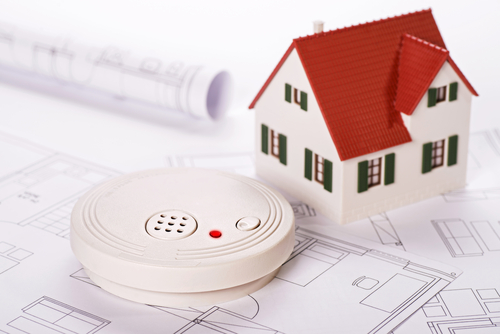Crucially, the Act cleared up confusion over the FSO’s scope for common areas of multi-occupied residential buildings, confirming the structure and external walls (including cladding and balconies) and individual flat entrance doors must now be assessed within the fire risk assessment for the property.
New duties will also be imposed on Responsible Persons such as landlords, block managers and managing agents under the new Fire Safety (England) Regulations 2022, which takes effect on 23 January 2023.
These include carrying out fire safety assessments according to the building’s height. For multi-occupied residential buildings over 18 metres in height or over seven storeys, the checklist includes building plans, external wall systems, and information boxes.
However, for the same type of building over 11 metres, the new legislation includes an additional element for fire doors, where the Responsible Person must “undertake quarterly checks on all communal fire doors, and make annual checks on flat entrance doors”.
Scott Barlow, Director of Building Surveying at Ingleton Wood, said: “The Fire Safety Act 2021 is one of the biggest legislation shifts of its kind. It will have far-reaching ramifications across the built environment and ultimately lead to greater scrutiny and safer buildings.
“However, we’re concerned there might be people out there who aren’t fully aware of these new responsibilities or the looming deadline to get everything in place to ensure compliance.
“In particular, we’re finding that the fire door element in smaller multi-occupied residential buildings may have slipped under the radar or been overshadowed by the raft of headline changes affecting high-rise buildings at 18 metres or over, given the spotlight they’re under.
“Our clients are either taking early proactive action now or being honest about not being aware and listening to our advice to ensure they are properly discharging their duties. The risk of failing to do so is significant.”
Duty holders may also be under the “false impression” of being legally compliant because they recently obtained a risk assessment for their property, Scott added.
He explained: “However, the assessment needs constant reviewing, and this process will involve the inclusion of the additional requirements from January 2023. The implications of these additional requirements can be both disruptive and costly and involve the substantial improvement and upgrading of passive fire measures within the building.
“Flat fire doors are a vital part of a building’s passive fire protection system, and in our opinion should always have been considered under the fire risk assessment. We are now educating our clients that because the regulations have changed, the fire risk assessment requirements have also changed.”
The Fire Safety (England) Regulations 2022, made under article 24 of the Fire Safety Order, will come into force on 23 January 2023 following the publication of supporting guidance, due later in 2022.
Scott added: “We are now actively trying to educate our property-owning clients and block management colleagues that the Fire Safety Act does not only apply to buildings over 18 metres and that just because their property currently has a valid fire risk assessment, it still means that further action may be required.
“The requirement to conduct detailed fire door checks, including to the individual flats, will be needed from January 2023, in all multi-occupied residential buildings with two or more sets of domestic premises.
“In our experience, these checks have so far resulted in the need to replace and upgrade a substantial numbers of doors. Our advice is to start having the door checks carried out as soon as possible, particularly given the material lead-in issues facing the construction sector.”
Scott Barlow is Director of Building Surveying at Ingleton Wood.
Want to comment on this story? If so...if any post is considered to victimise, harass, degrade or intimidate an individual or group of individuals on any basis, then the post may be deleted and the individual immediately banned from posting in future.















.png)





Join the conversation
Please login to comment